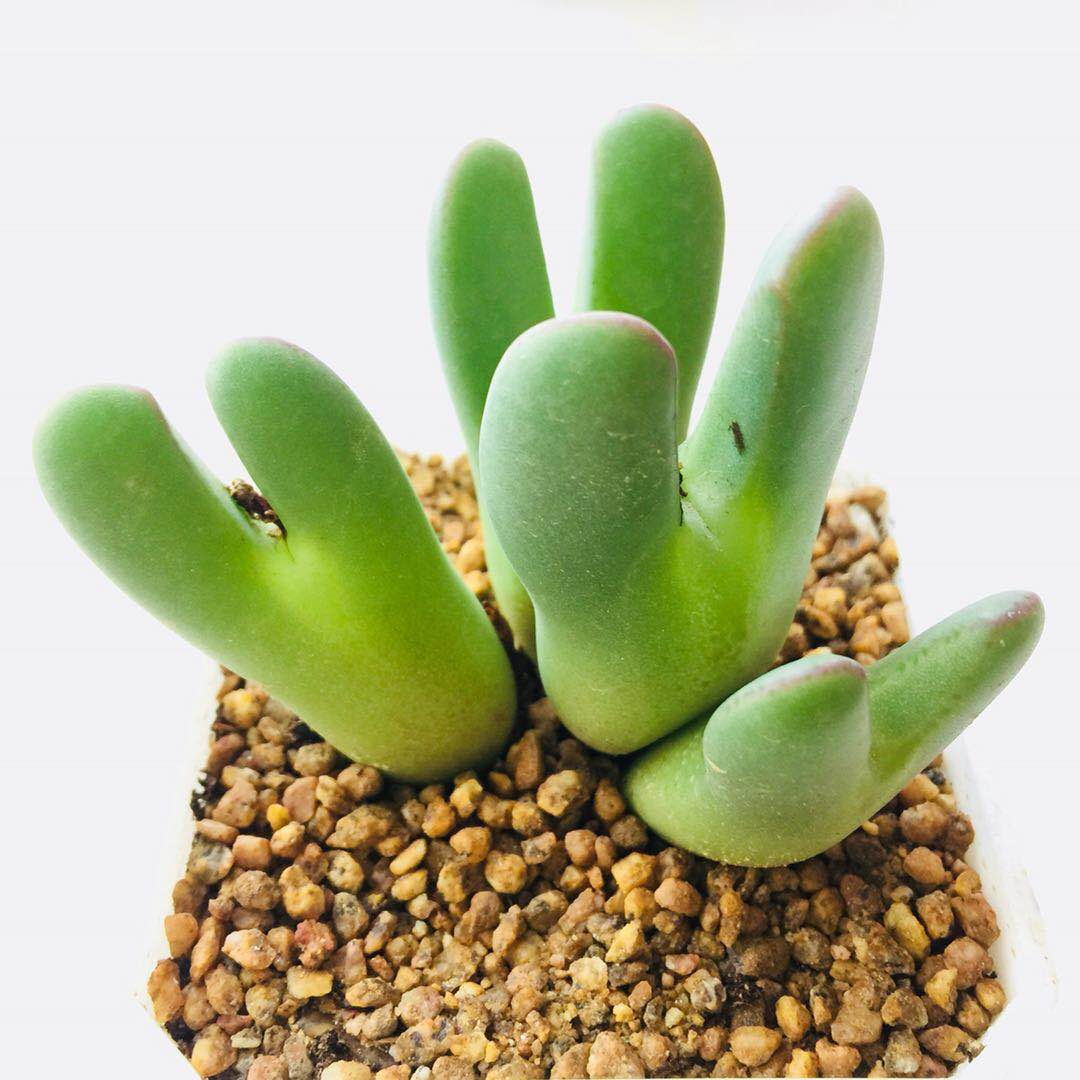The Conophytum bilobum (Marloth) N.E.Br. belongs to the Crassulaceae family and the genus Conophytum bilobum (Marloth) N.E.Br.. Its native habitat is in South Africa and Namibia, where it experiences a tropical arid climate. The region enjoys ample sunshine, significant temperature fluctuations between day and night, and distinct dry and rainy seasons, which are highly conducive to the propagation of succulent plants. The Conophytum bilobum (Marloth) N.E.Br. typically grows in the crevices of open quartz and slate rocks, clinging to poor soil, and concealing its small size among gravel to access abundant mineral micronutrients. Its protective coloration also serves as excellent camouflage, preventing it from being eaten by herbivores.
Basic Characteristics:
Influenced by its native environment, the Conophytum bilobum (Marloth) N.E.Br. prefers a sunny, warm, and dry environment. It thrives in well-draining, aerated soils rich in mineral particles, making it highly drought-tolerant.
Similar to other Crassulaceae succulents, during the juvenile stage, the Conophytum bilobum (Marloth) N.E.Br. is typically solitary. As it matures into an old stump, it gradually forms clusters, develops woody bases, and exhibits flowering in autumn and winter, with shedding of old leaves in winter and spring. After each shedding, it tends to produce more single heads.
Its growing season mainly occurs in spring, autumn, and early winter. It is not tolerant of high temperatures or severe cold and tends to undergo brief dormancy periods during hot summers. Winter temperatures should not drop below 10°C during the overwintering period.
Propagation is primarily done through seeds and division. Cross-pollination can be attempted when it blooms to collect seeds for propagation. Division should be performed along the direction of the rhizomes, preserving the woody stems and some roots, and then transplanted into pots to promote survival.
Conophytum bilobum (Marloth) N.E.Br. varieties are diverse, with leaves resembling flat hearts or saddles. When viewed from afar, they form a natural "V" shape. The leaves are fleshy, predominantly gray-green, fluorescent green, or military green in color. Some varieties may have granular patterns on the leaves, while others may have a ring of red lines on the leaf margins, such as the Conophytum bilobum (Marloth) N.E.Br. 'Red Ear' and 'Red Edge.'
Conophytum bilobum (Marloth) N.E.Br. typically takes about three years to mature into flowering old stumps. Its natural flowering period occurs mainly in autumn and winter, producing brightly colored daisy-like flowers that exhibit day-opening and night-closing characteristics. The flowering period lasts for about a week. The flowers come in a variety of colors, including orange-red, yellow, pink, purple, and dark red. Naming can be based on flower colors, such as 'Orange Flower Conophytum bilobum (Marloth) N.E.Br.,' 'Pink Flower Conophytum bilobum (Marloth) N.E.Br.,' and 'Purple Flower Conophytum bilobum (Marloth) N.E.Br..'
During the juvenile stage, Conophytum bilobum (Marloth) N.E.Br. mainly grows as single plants. After about a year of cultivation, it undergoes a natural shedding process in winter and spring, which is also a natural proliferation process. When the old skin completely dries and falls off, the original leaf bud will split into 2-3 single heads, gradually transitioning into a clustered state.
Therefore, during the shedding period, watering should be reduced, fertilization stopped, and sufficient sunlight provided to facilitate rapid skin consumption and natural molting. Once shedding is completed successfully, Conophytum bilobum (Marloth) N.E.Br. will quickly enter a period of rapid growth, gradually achieving an explosion of pots and clustering.
Succulents of the Crassulaceae family have always been a blend of ornamental and interesting varieties. However, they are relatively challenging to care for due to their high requirements for water and light, as well as their characteristics of summer dormancy and winter shedding. Improper care can lead to elongation, while water accumulation can result in root mealybugs and black rot disease. Therefore, their maintenance presents a greater challenge compared to other succulents, requiring careful attention to environmental conditions and personal experience.
